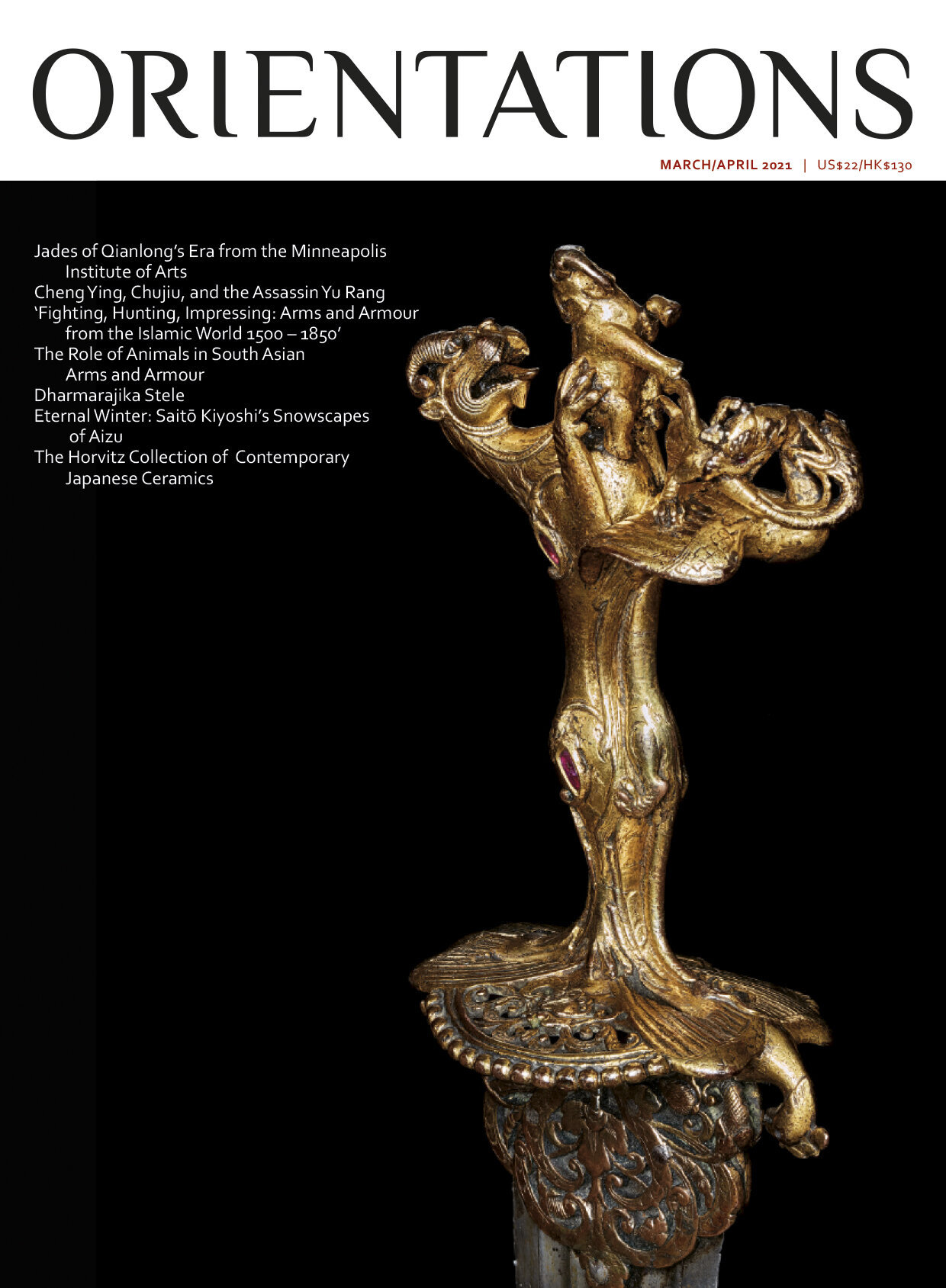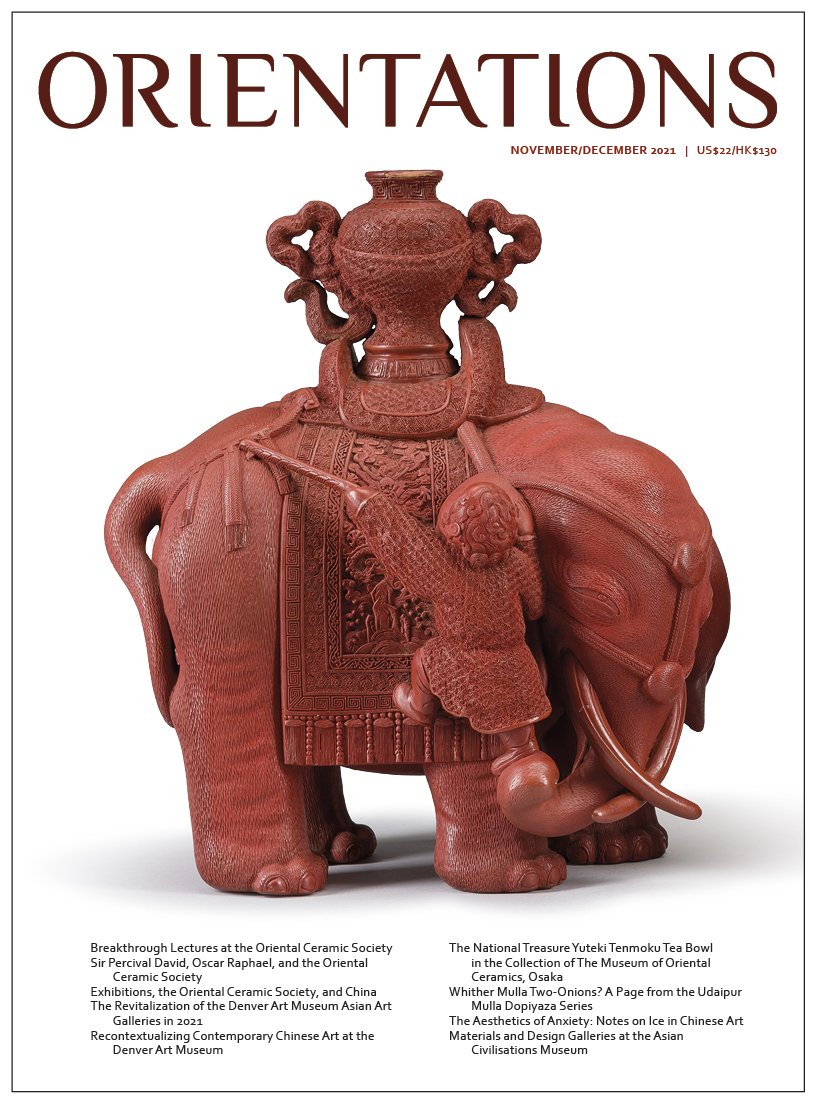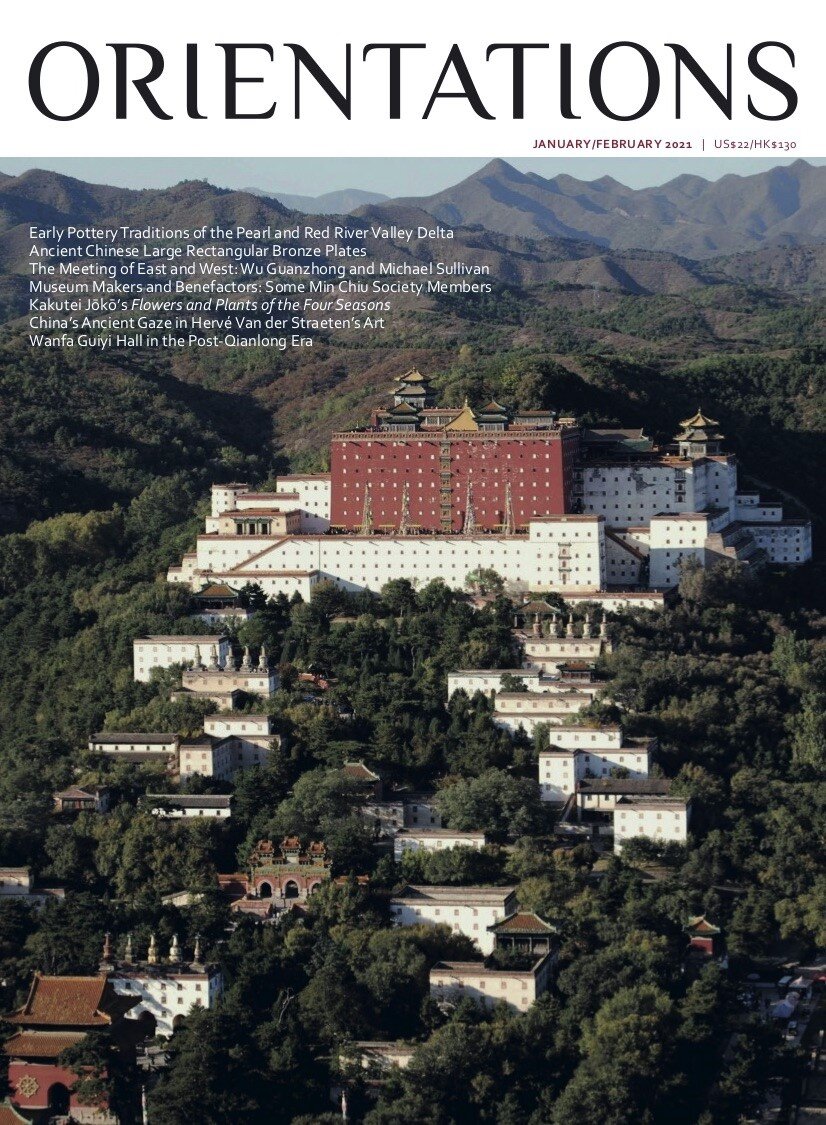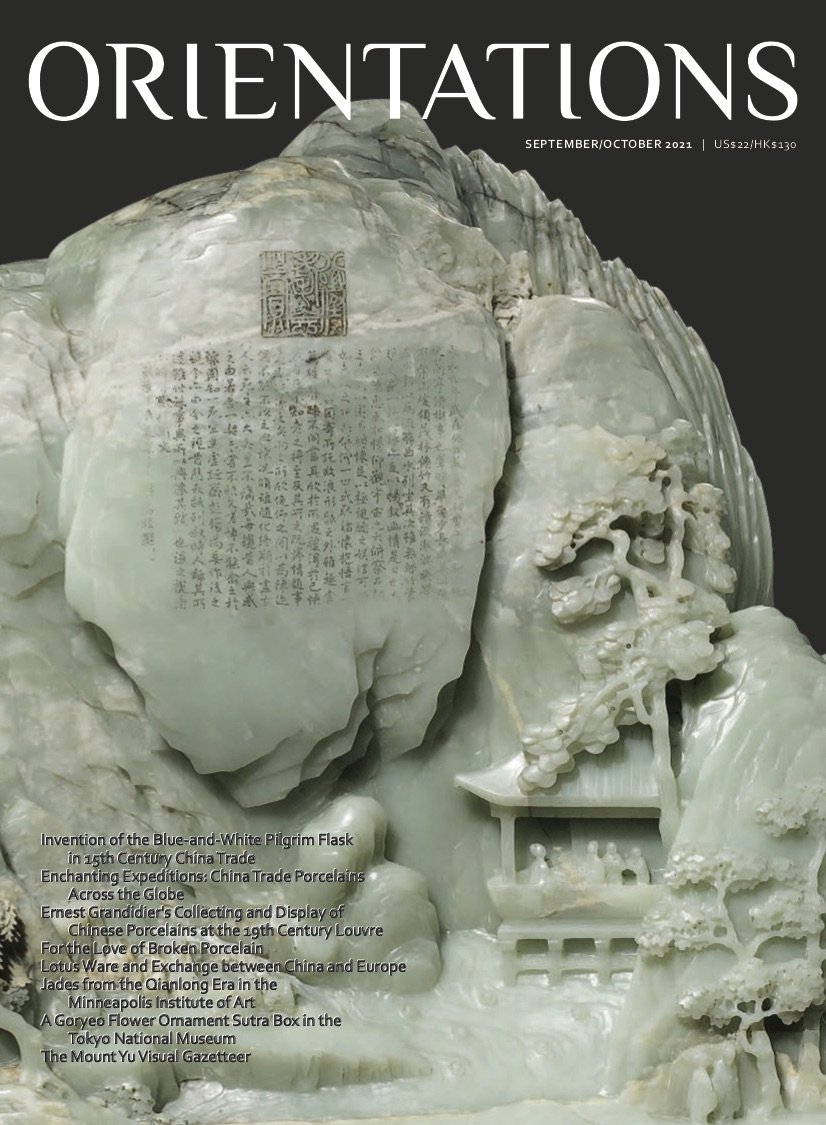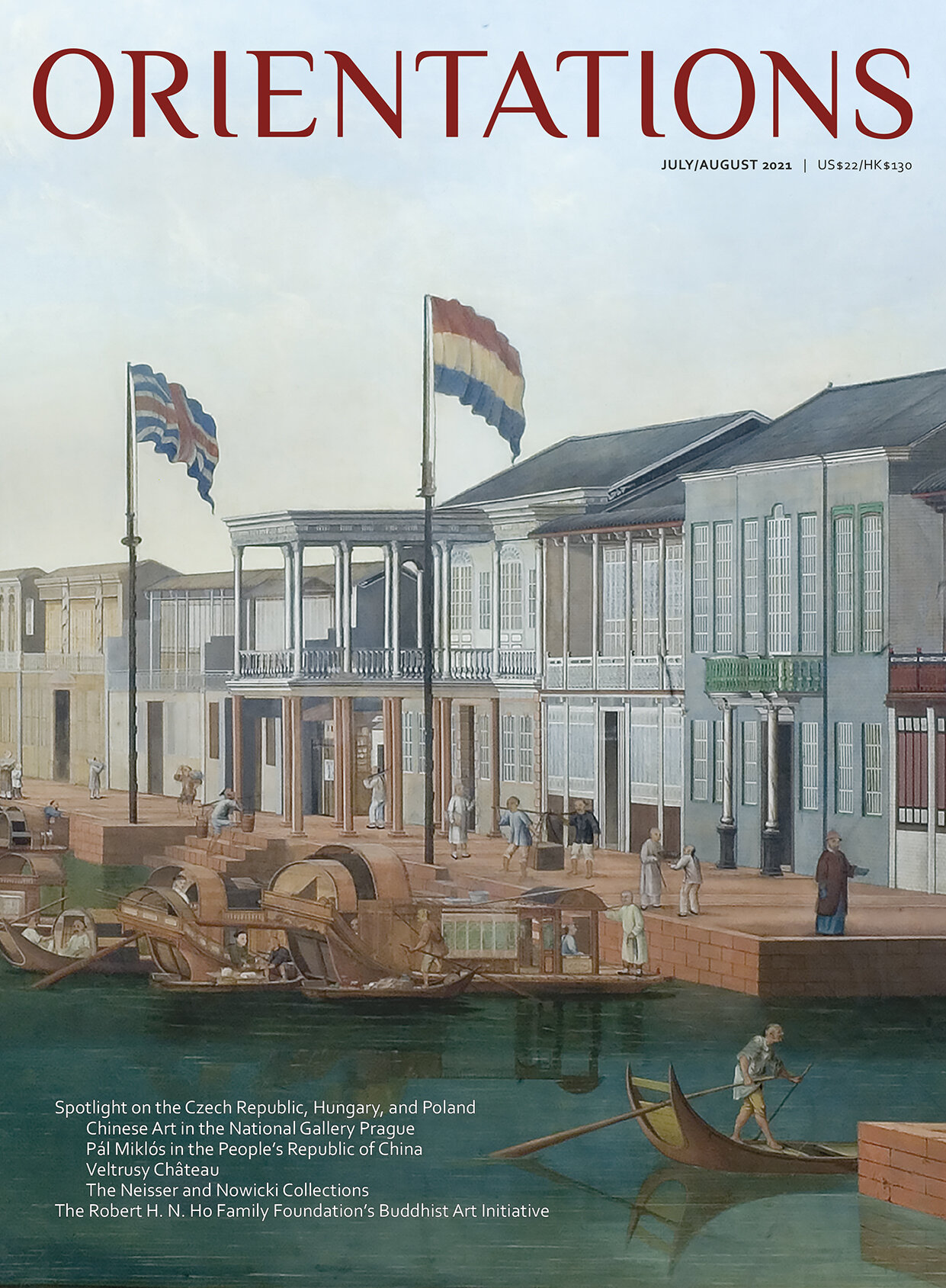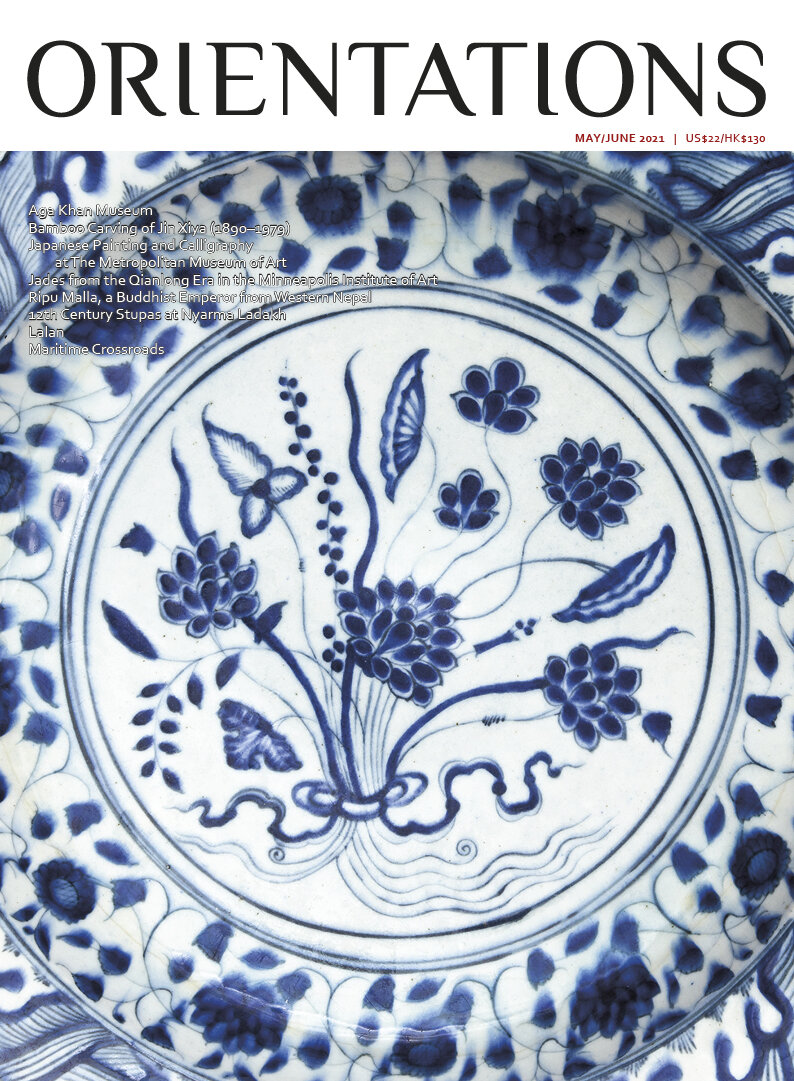 Image 1 of 1
Image 1 of 1


MAY/JUN 2021
VOLUME 52 - NUMBER 3
This May/June 2021 issue features the Aga Khan Museum in Toronto. Founded in 2014, the museum is housed in a building designed by the Pritzker Prize–winning architect Fumihiko Maki and is dedicated to the presentation of the art of Muslim civilisations from antiquity to contemporary times. The permanent collection, spanning from Spain and northern Africa to China and southern Asia, was acquired by Prince Sadruddin Aga Khan (1933–2003) and later expanded by his descendants. We interview the interim director and CEO, Ulrike Al-Khamis, on how the museum facilitates a better understanding of different Muslim cultures and their interconnectedness with the rest of the world. While the collection is especially strong in the arts of the book, ceramics from the 8th to the 18th century compose the second largest category, of which the majority are presented in the museum’s Bellerive Room, named after Prince Sadruddin Aga Khan’s former residence near Geneva, Switzerland.
The Metropolitan Museum of Art has recently acquired a collection of bamboo wrist rests and folding fans by Jin Xiya (1890–1979), the only group in a public museum outside of China. As one of the finest bamboo artists in 20th century China, Jin commanded a wide spectrum of carving styles, which allowed him to combine several within a single work and to innovate in this medium. At The Met, the collecting of Japanese painting and calligraphy began in the early 1910s, and the collection has grown steadily over the years. The exhibition, ‘Japan: A History of Style’, opened this spring and includes recently acquired works that shows the museum’s commitment to broadening the stories that objects can tell about Japanese art.
We bring readers two articles on the art of the Himalayas, a region of inexhaustible treasures, which build upon articles from past issues of Orientations. The first furthers a study of a 1994 paper on the metal sculptures of the Khasa Malla kingdom of western Nepal, and the second revisits the Nyarma complex in Ladakh, on which we first reported in 2007, and discusses the current state of the architecture and mural paintings.
In past years, for most people attending Asia Week in New York, a visit to J. J. Lally & Co. Oriental Art in the Fuller Building on the corner of 57th Street and Madison Avenue was a necessity. James Lally or ‘Jim’ would inevitably present a stunning array of the latest acquisitions or works from private collectors, from Chinese archaic jades and bronzes to Ming- and Qing-dynasty works of art. It is with sadness that I learned of the gallery’s closure this March after 35 years. Prior to founding the gallery, Lally joined the Chinese Art department at Sotheby’s New York in 1973 and was instrumental in building the auction house’s operations in Hong Kong. A great dealer who combined a connoisseur’s eye with impeccable scholarly research, he will be a hard act to follow.
FEATURES
Filiz Çakır Phillip. The Aga Khan Museum. A Testament to the Connoisseurship of Islamic Art
Marika Sardar. 'Image? The Power of the Visual'
Pengliang Lu. Beyond Virtuosity: The Bamboo Carving of Jin Xiya (1890-1979)
Aaron Rio. New Directions: Recent Acquisitions of Japanese Painting and Calligraphy at the Metropolitan Museum of Art
Liu Yang. In Pursuit of the Picturesque. Jades from the Qianlong Era in the Minneapolis Institute of Art (Part 2)
David C. Andolfatto. Ripu Malla, a Buddhist Emperor from Western Nepal
Roberto Vitali, Yutaka Hirako and Pimpim de Azevedo. 12th Century Stupas at Nyarma Ladakh
Tiffany Law. Lalan's Metaphysical Journey Through Her Artistic Practice
Libby Lai-Pik Chan. Maritime Crossroads: Millennia of Global Trade in Hong Kong
REVIEWS
Lianming Wang. Henri Bertin and the Representation of China in Eighteenth-Century France by John Finlay
Julie M. Segraves. 'Cosmoscapes: Ink Paintings by Tai Xiangzhuo'
INTERVIEWS
An Interview with Dr Ulrike Al-Khamis, Interim Director and CEO, Aga Khan Museum
CURATOR’S CHOIE
Adriana Proser. Teotihuacan
VOLUME 52 - NUMBER 3
This May/June 2021 issue features the Aga Khan Museum in Toronto. Founded in 2014, the museum is housed in a building designed by the Pritzker Prize–winning architect Fumihiko Maki and is dedicated to the presentation of the art of Muslim civilisations from antiquity to contemporary times. The permanent collection, spanning from Spain and northern Africa to China and southern Asia, was acquired by Prince Sadruddin Aga Khan (1933–2003) and later expanded by his descendants. We interview the interim director and CEO, Ulrike Al-Khamis, on how the museum facilitates a better understanding of different Muslim cultures and their interconnectedness with the rest of the world. While the collection is especially strong in the arts of the book, ceramics from the 8th to the 18th century compose the second largest category, of which the majority are presented in the museum’s Bellerive Room, named after Prince Sadruddin Aga Khan’s former residence near Geneva, Switzerland.
The Metropolitan Museum of Art has recently acquired a collection of bamboo wrist rests and folding fans by Jin Xiya (1890–1979), the only group in a public museum outside of China. As one of the finest bamboo artists in 20th century China, Jin commanded a wide spectrum of carving styles, which allowed him to combine several within a single work and to innovate in this medium. At The Met, the collecting of Japanese painting and calligraphy began in the early 1910s, and the collection has grown steadily over the years. The exhibition, ‘Japan: A History of Style’, opened this spring and includes recently acquired works that shows the museum’s commitment to broadening the stories that objects can tell about Japanese art.
We bring readers two articles on the art of the Himalayas, a region of inexhaustible treasures, which build upon articles from past issues of Orientations. The first furthers a study of a 1994 paper on the metal sculptures of the Khasa Malla kingdom of western Nepal, and the second revisits the Nyarma complex in Ladakh, on which we first reported in 2007, and discusses the current state of the architecture and mural paintings.
In past years, for most people attending Asia Week in New York, a visit to J. J. Lally & Co. Oriental Art in the Fuller Building on the corner of 57th Street and Madison Avenue was a necessity. James Lally or ‘Jim’ would inevitably present a stunning array of the latest acquisitions or works from private collectors, from Chinese archaic jades and bronzes to Ming- and Qing-dynasty works of art. It is with sadness that I learned of the gallery’s closure this March after 35 years. Prior to founding the gallery, Lally joined the Chinese Art department at Sotheby’s New York in 1973 and was instrumental in building the auction house’s operations in Hong Kong. A great dealer who combined a connoisseur’s eye with impeccable scholarly research, he will be a hard act to follow.
FEATURES
Filiz Çakır Phillip. The Aga Khan Museum. A Testament to the Connoisseurship of Islamic Art
Marika Sardar. 'Image? The Power of the Visual'
Pengliang Lu. Beyond Virtuosity: The Bamboo Carving of Jin Xiya (1890-1979)
Aaron Rio. New Directions: Recent Acquisitions of Japanese Painting and Calligraphy at the Metropolitan Museum of Art
Liu Yang. In Pursuit of the Picturesque. Jades from the Qianlong Era in the Minneapolis Institute of Art (Part 2)
David C. Andolfatto. Ripu Malla, a Buddhist Emperor from Western Nepal
Roberto Vitali, Yutaka Hirako and Pimpim de Azevedo. 12th Century Stupas at Nyarma Ladakh
Tiffany Law. Lalan's Metaphysical Journey Through Her Artistic Practice
Libby Lai-Pik Chan. Maritime Crossroads: Millennia of Global Trade in Hong Kong
REVIEWS
Lianming Wang. Henri Bertin and the Representation of China in Eighteenth-Century France by John Finlay
Julie M. Segraves. 'Cosmoscapes: Ink Paintings by Tai Xiangzhuo'
INTERVIEWS
An Interview with Dr Ulrike Al-Khamis, Interim Director and CEO, Aga Khan Museum
CURATOR’S CHOIE
Adriana Proser. Teotihuacan

